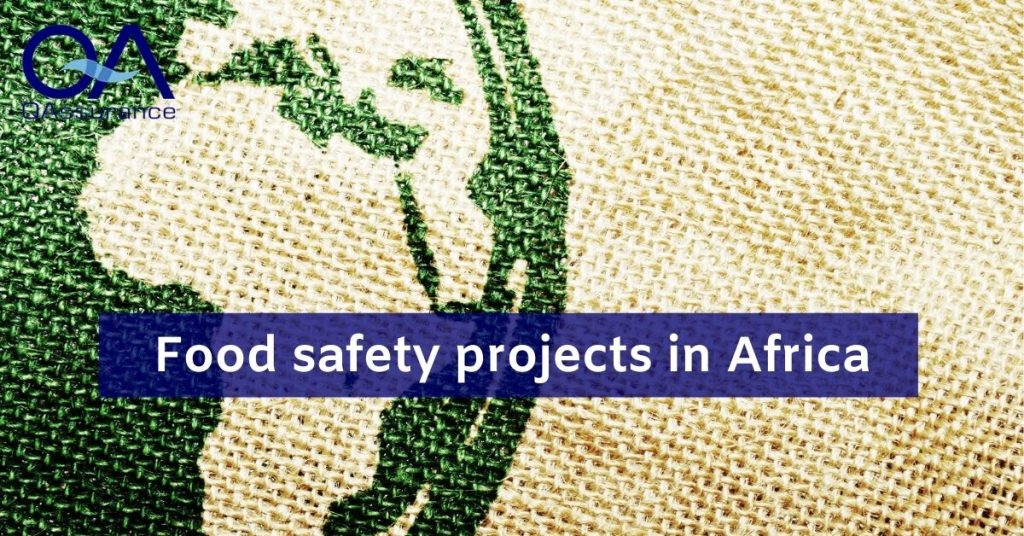Introduction Management of changes
This procedure establishes how changes to the food safety management system are dealt with. For example, the following components are discussed:
- Change in documentation
- Change in validation
- Change in personnel
- Change in resources
Documentation of changes
Purpose:
Adjusting documentation, procedures or instructions in the manual. This is the result of external or internal audits of controlling bodies such as NVWA, certification bodies, customer audits, or consultants for improving food safety. It can also be adapted because the working method has been adjusted internally.
Outcome:
The quality manual is recorded in iMIS and is digital. Every change is recorded in the system and it is clear which changes have been made compared to a previous version of the document. The last date change is the version number. The registrations are also stored in the 32-folder system. This system is both hard copy and digital. In order to have critical registrations readily available in the future, it has been agreed to scan them and store them digitally. Regarding documents there is no policy from the authorities. By assigning login codes with passwords and authorizations it is arranged who can view or change documents. Daily electronic backups prevent documents from being lost.
Definitions:
The following types of documents are included in our digital handbook:
- Procedure: Cross-departmental activities are recorded in a procedure. A procedure contains the steps that must be followed by different departments to achieve the desired end result.
- Instruction: An instruction states how an action must be carried out within the department.
- Form: A form is intended as an information carrier and serves as a means of communication between the different departments.
- Specifications: The determined constants are recorded here. Specifications are for reference.
Adjusting documents:
The change of documents is done by an authorized employee of the quality service or any other authorized persons such as management or department heads.
Changes are automatically registered.
Expired documents are deleted. The deleted document remains in the change log.
Retention periods for documents and forms:
All changes are registered and saved in iMIS.
Registration forms related to food safety and production are kept for at least the shelf life +12 months.
Data for traceability is kept for at least 3 years.
Destruction of documents:
All printed documents containing confidential information will be made illegible.
This can be done by shredding or by making the text illegible.
Documents are disposed of as paper waste.
Note:
When errors are made in registrations (i.e. completed measurements), these can be adjusted. However, only with the mention of:
- Reason for change;
- By who;
- Date and time;
- Initials.
Persons responsible / responsibilities:
Quality service:
- Masters the various documents and ensures that the documents used in the quality manual are up to date and correct.
- Is responsible for updating the handbook annually.
- Is responsible for assessing the requested changes and implementing them.
Validation
Purpose:
Validation means that the applicability is assessed in advance. It is also assessed whether there are consequences for food safety management.
Examples of validation:
- Hazard study;
- Flowcharts;
- New standards, changes in GFSI standards;
- New machines / equipment / systems;
- New working methods / recipes;
- Change in cleaning objects;
- New claims;
- Packaging and machines (e.g. migration to product);
- Verification and recall follow-up;
- New routing;
- New products;
- New raw materials, changes at the supplier or change of supplier;
- Changes in use by the buyer or consumer;
- Changes in storage or transport conditions in the chain;
- Renovation, new materials;
- Developments in technological knowledge regarding process or products;
- Legislative developments (In country of production and sale);
- New risks from information regarding recalls, fraud, product authenticity, food defense.
If the preparation method of the product is essential for product safety, such as heating, then the instruction is fully validated to ensure that a safe, ready to eat product is produced.
Assess the validation
- Whether possible dangers can arise;
- Whether the applicability is correct;
- What improvement is achieved;
- Whether the machines can meet the product requirements;
- Are the claims satisfied;
- Are all necessary specifications present.
No new processes are put into use until they have been validated. The validation team has the decision-making authority in this matter. If no release is made by the validation team, the change will not be implemented.
Validation team
The validation is performed by the validation team. Members of the HACCP team can be part of the validation team. The validation team is composed in such a way that all necessary disciplines are present, so that a correct assessment can be made. Each validation is recorded in writing.
Changes in personnel
Purpose:
- Dealing with spontaneous busyness.
- Collecting specialist knowledge.
- Change of personnel through advancement, dismissal, or replacement.
- Increase in extra staff due to growth.
Outcome:
- Determining tasks and responsibilities.
- Informing about company hygiene, personal hygiene, and quality policy that applies within the company.
- Provide food safety training or any CCP / OPRP training if applicable.
- Communicate goals (if applicable to the position).
- Determine the contact time.
- Who is / are going to train new staff members.
- Determine both fixed and variable compensation.
- Purchase work clothing or PPE (personal protective equipment).
Changes in resources
Purpose:
- Replacing current machine that is broken.
- Expansion of machinery due to necessary growth in production capacity.
- Purchase of machine for support personnel.
Outcome:
- Does the machine comply with legal safety regulations in terms of construction.
- Does the machine comply with any food safety legislation.
- Validation has been performed on the machine.
- Who controls the machine.
- Who cleans the machine.
Related articles to Management of changes? Is there a procedure?
Many customers and visitors to this page 'Management of changes? Is there a procedure?' also viewed the articles and manuals listed below:



